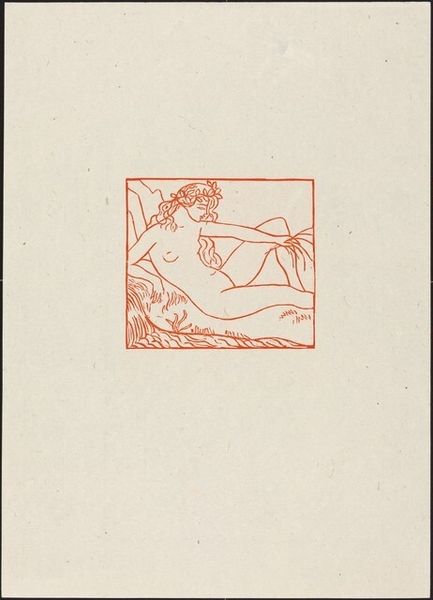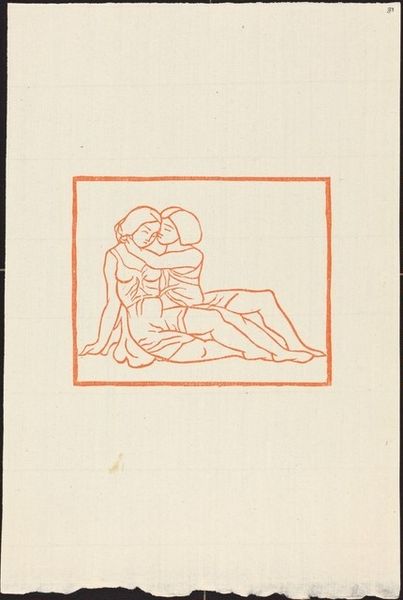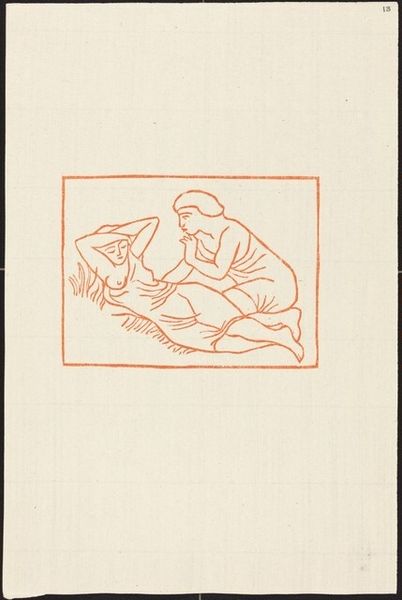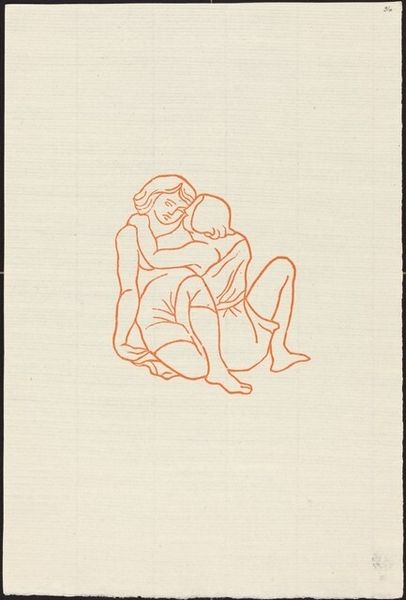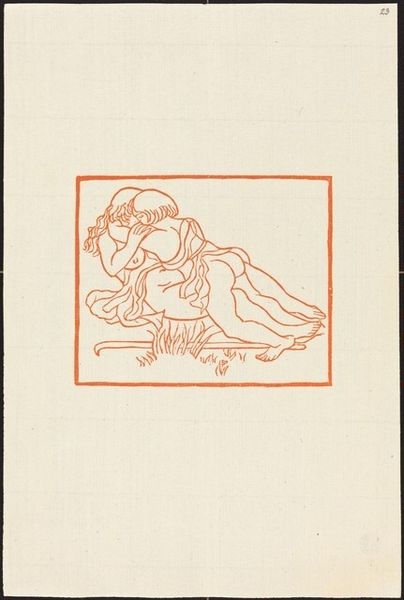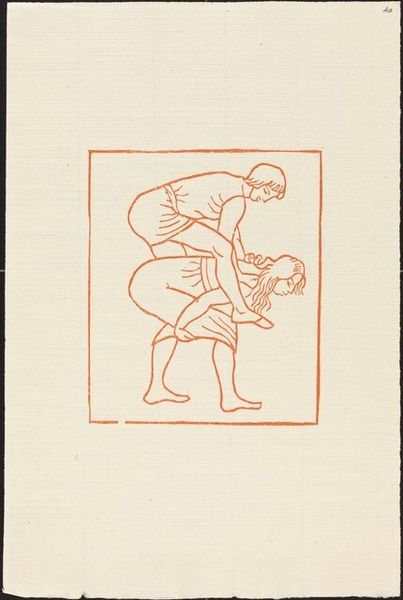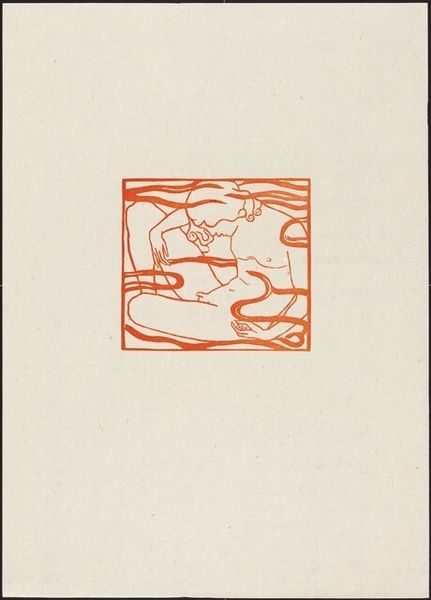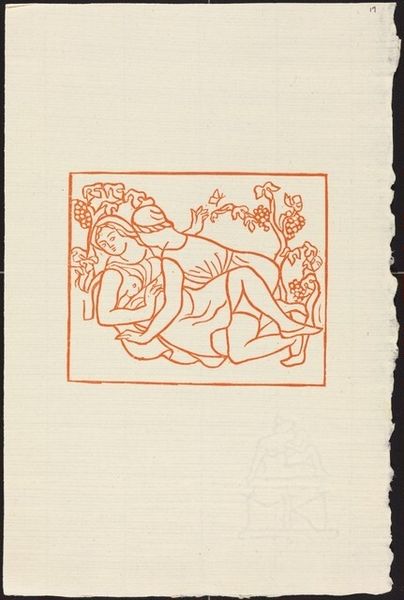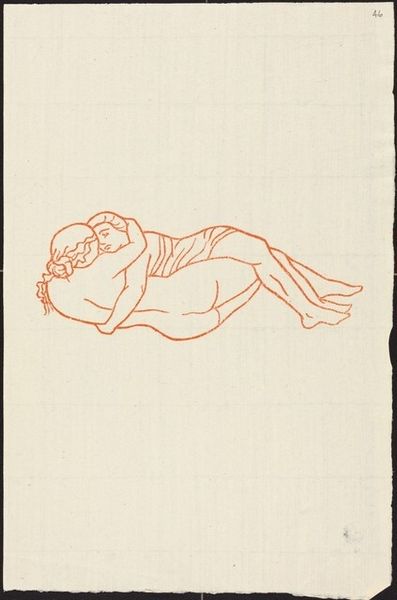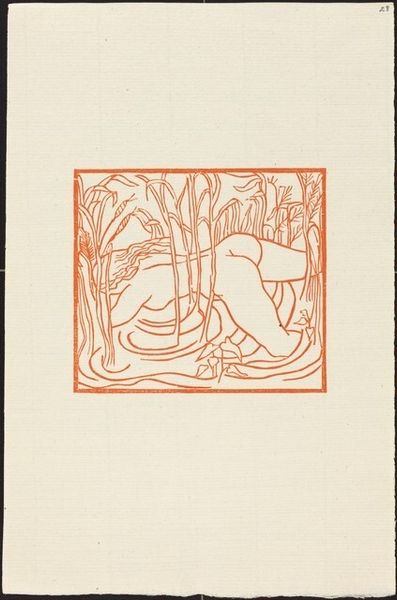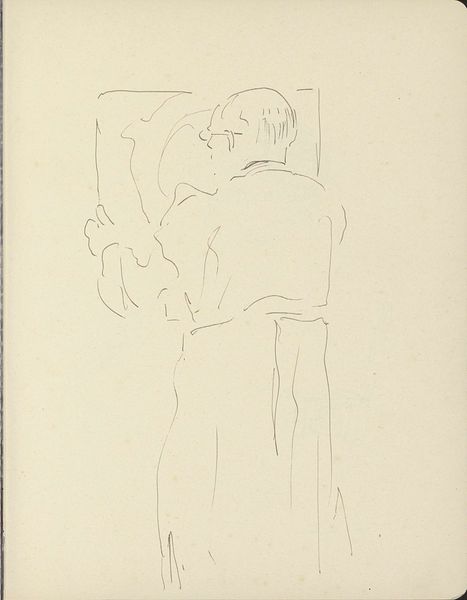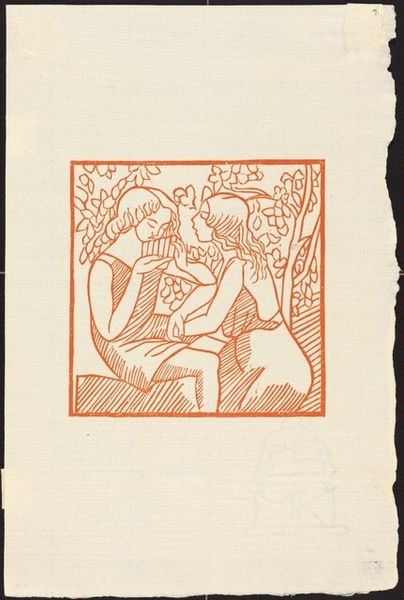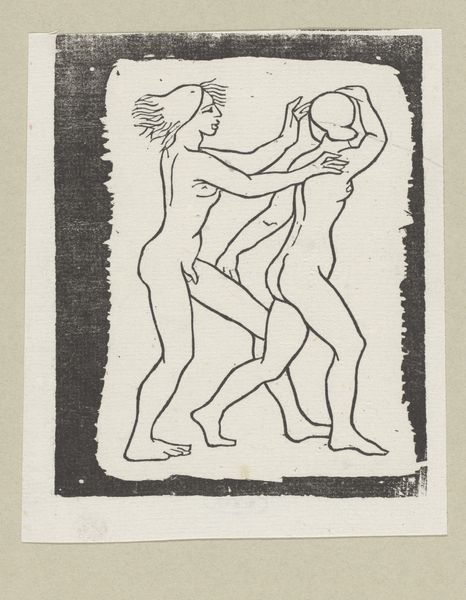
Second Eclogue: Corydon Sees Himself in a Pool (Corydon se mirant dans l'eau) Possibly 1926
0:00
0:00
drawing, print, ink
#
drawing
# print
#
pen sketch
#
figuration
#
ink line art
#
ink
#
pen-ink sketch
#
line
#
nude
#
modernism
Copyright: National Gallery of Art: CC0 1.0
Editor: Here we have Aristide Maillol's "Second Eclogue: Corydon Sees Himself in a Pool," likely from 1926, created with ink. The simplicity of the line work gives it such a raw, classical feel, almost like it was lifted from an ancient vase. What catches your eye most about this piece? Curator: The image resonates deeply with the classical myth of Narcissus, but reframed through Virgil's lens. Corydon, unlike Narcissus, is a shepherd, grounded, yet the allure of self-reflection remains. Notice the bordering square; it encloses the figure, trapping him with his image, yes, but also suggests order, intellect imposed on nature. How does that confinement affect your perception? Editor: That's a brilliant point about the border adding containment. It almost feels like the figure is displayed like a specimen. I’m curious about the symbolism of the leaves just above his back, like he's sprouting. Curator: Precisely! They echo the myth's transformation motifs, connecting self-obsession to natural processes. In psychoanalysis, the mirror stage involves recognising the self through an image; this piece renders visible how that process might ‘take root’ within us. Do you see other familiar mythological visual cues, or are there any unexpected ones? Editor: While the figure feels timeless and nude, connecting with universal beauty ideals, I don't see obvious contemporary social elements. Curator: Exactly, Maillol is deliberately playing with the idealised form outside of our mundane contemporary worries. That artistic liberty to tap into our shared history makes "Corydon" more evocative than simply illustrative, isn't it? Editor: Absolutely! Looking at it now, I understand how it encapsulates this timeless, human tendency for self-reflection, using the iconic Narcissus myth as an underlying architecture. Curator: It's fascinating to observe the enduring power of simple lines and the rich symbolism they can convey across time and cultures. We project so much, and the artist knew that very well!
Comments
No comments
Be the first to comment and join the conversation on the ultimate creative platform.
